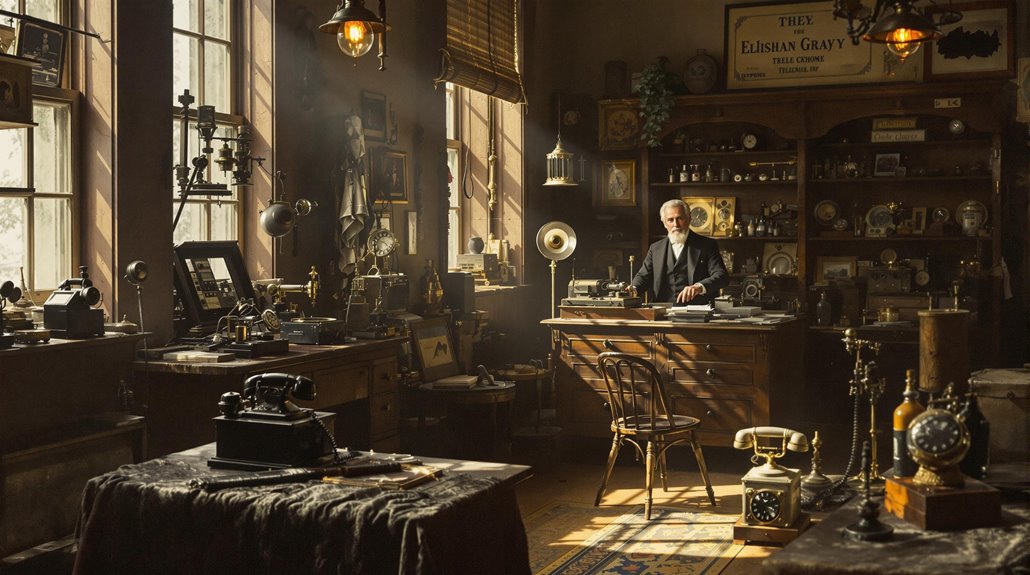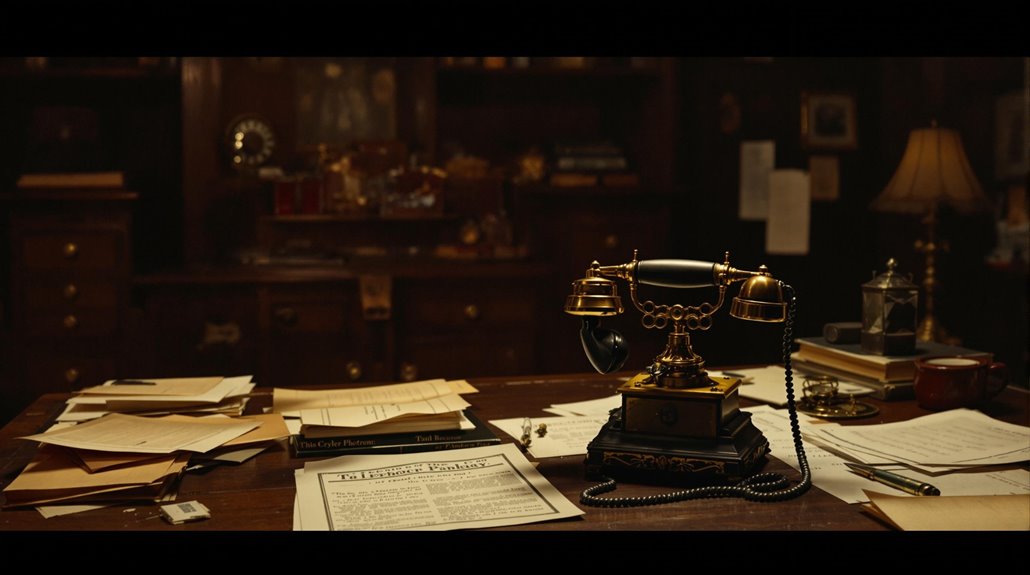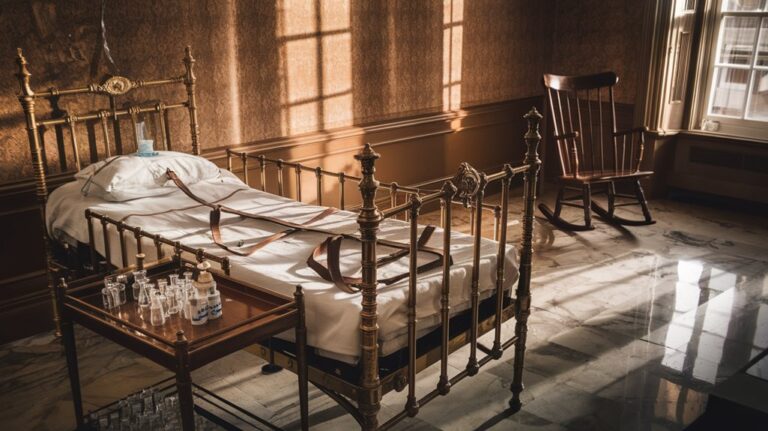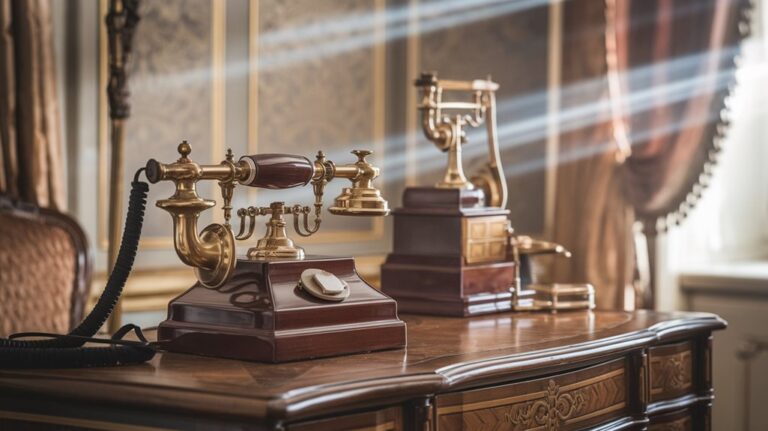Elisha Gray’s Tragic Timing: The Telephone Patent Race That Ended in Heartbreak
While you might think patent disputes are dry affairs of paperwork and technicalities, the story of Elisha Gray's telephone patent loss will make you question everything you know about innovation and timing. You've probably never heard of Gray, yet he came within hours of being credited as the telephone's inventor. What happened on February 14, 1876, wasn't just about filing timestamps—it was about relationships, office politics, and a series of coincidences that changed communication history forever.
The Early Years: A Self-Made Inventor's Journey
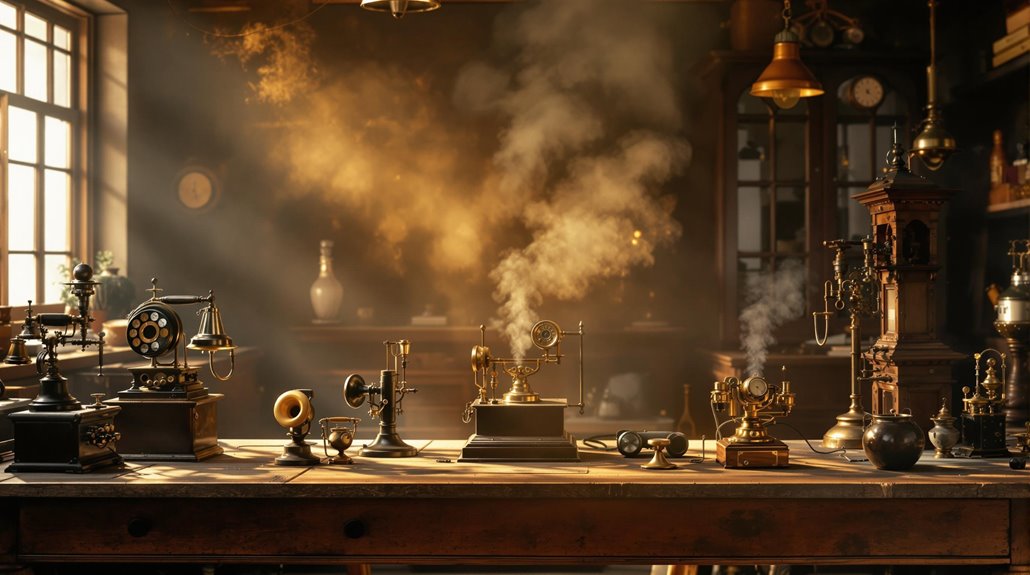
While born into modest circumstances in 1835 Ohio, Elisha Gray's journey from farm worker to renowned inventor exemplifies the classic American success story.
After losing his father at age 12, you'll find Gray facing numerous invention challenges as he worked various jobs – from blacksmithing to carpentry – to survive. His frail physique made him unsuited for the blacksmith apprenticeship he initially pursued.
Despite his limited early education, Gray's determination led him to Oberlin College at age 22, where he worked as a janitor to fund his studies.
It was here that he discovered his passion for electricity, using the college's equipment for experiments. His success in electrical innovation eventually led to establishing the Western Electric company that would become a major supplier to Western Union.
His breakthrough came while still working as a dairy farmer, when he created a self-adjusting telegraph relay.
This innovation caught Western Union's attention, leading to a partnership that would launch his career in electrical innovation.
Racing Against Time: The Fateful Day of February 14, 1876
As tensions mounted in early 1876, both Alexander Graham Bell and Elisha Gray raced to secure patent rights for their telephone designs.
You'll find that the race dynamics intensified when Gray revealed his invention to associates on February 11, prompting Bell to accelerate his own filing plans upon hearing rumors of his rival's work.
Their patent strategies collided on Valentine's Day 1876, when both men submitted their applications.
While Gray filed a caveat – a preliminary declaration of invention – Bell's lawyer hand-delivered a full patent application.
Though Bell's submission was recorded as fifth that day and Gray's as thirty-ninth, controversy erupted over the timing.
Bell's application allegedly arrived after Gray's, but his lawyer's insistence on immediate fee processing raised eyebrows.
The Patent Office's subsequent three-month suspension of Bell's application only deepened the mystery.
Western Electric Manufacturing Company co-founder Gray had significant industry experience behind his invention.
Having worked extensively with the deaf, Bell's early research into speech and hearing anatomy gave him unique insights into sound transmission.
Behind the Scenes: Bureaucracy and Patent Office Politics
When you peek behind the curtain of the 1876 Patent Office, you'll discover a bureaucratic maze ripe for manipulation. Under Commissioner Ellis Spear's leadership, the office operated without standardized filing systems or timestamps, creating opportunities for patent delays and questionable practices.
You'd find patent attorneys freely mingling with examiners like Zenas Wilber, discussing pending applications over dinner and drinks. With no rules against these informal communications, large companies could exercise bureaucratic influence through their well-connected representatives. Bell's attorney used these informal channels to ensure Bell's patent application received immediate processing, while Gray's submission languished in bureaucracy.
Patent examiners, earning $2,500 annually, weren't explicitly forbidden from accepting gifts or favors. The system's flaws sparked regular accusations of favoritism, leading Congress to launch an investigation in 1878. Ever since the act of 1793 removed official rejection powers from the patent tribunal, the system had become increasingly susceptible to abuse.
Despite calls for reform and transparency, proposals for basic improvements like time-stamping were rejected, leaving the office vulnerable to manipulation.
The Courtroom Battle: Western Union vs. Bell
Once Gray joined forces with Western Union in 1878, the battle for telephone supremacy shifted from the Patent Office to the courtroom.
Western Union's legal strategies centered on proving Gray as the telephone's true inventor, with attorneys George Gifford and Lysander Hill leading the charge. They claimed Bell had stolen ideas from Gray's caveat and questioned the suspicious timing of Bell's patent application. The litigation covered extensive ground, filling the entire volume of the U.S. Reports.
Bell's lawyers, Chauncey Smith and James J. Storrow, successfully defended against these patent disputes. Bell's legal team would go on to fight around 600 lawsuits during the patent's validity period.
The high-stakes battle ended in 1879 when Western Union conceded defeat, surrendering their telephone patents to Bell. In exchange, Bell received 20% of Western Union's telephone rentals for 17 years.
The Supreme Court later validated Bell's victory in 1888 with a close 4-3 decision, securing his monopoly until 1894.
A Legacy Beyond the Telephone: Gray's Lasting Impact

Despite losing the telephone patent battle, Elisha Gray left an indelible mark on technological innovation through his remarkable inventions and achievements.
His early work on creating a self-adjusting telegraph in 1865 marked the beginning of his prolific inventing career. His genius reflected in groundbreaking creations like the telautograph innovation, which revolutionized long-distance communication by transmitting handwriting and drawings over telegraph wires. His musical telegraph laid the foundation for modern synthesizers, showcasing his visionary approach to combining technology and art. Born in rural Barnesville, Ohio, he developed an early passion for innovation that would shape his future endeavors.
Consider these remarkable accomplishments:
- Earned over 70 patents and nearly $5 million from his innovations
- Co-founded Western Electric Manufacturing Company, shaping America's electrical industry
- Served as chairman of the International Congress of Electricians while teaching at Oberlin College
From his humble beginnings as a blacksmith's apprentice, Gray rose to become one of the most influential electrical engineers of his time.

